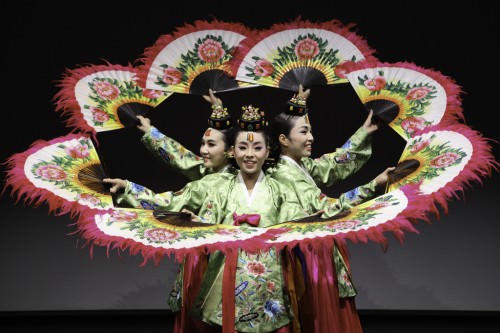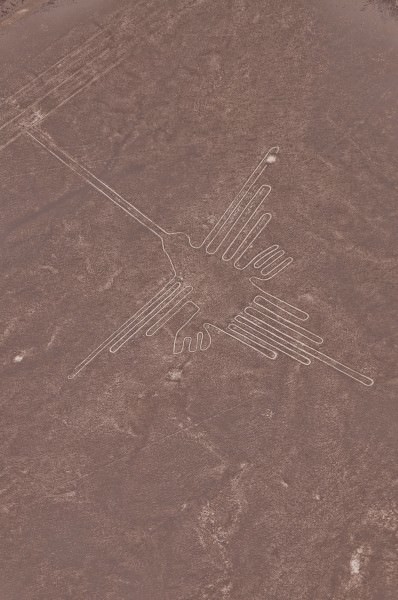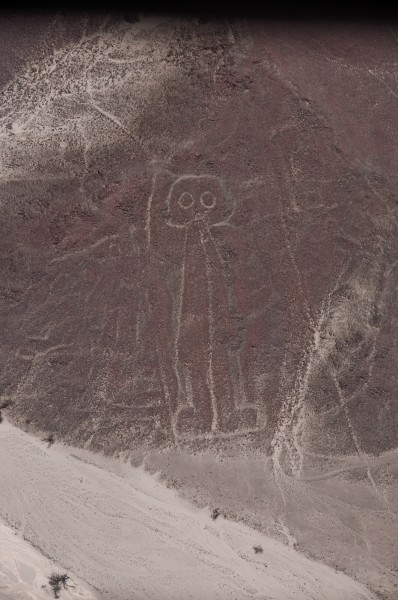Hanji › Nazca Lines » Origins and History
Articles and Definitions › Contents
- Hanji › Ancient History
- Nazca Lines › Antique Origins
Ancient civilizations › Historical places, and their characters
Hanji › Ancient History
Definition and Origins

Hanji is the name of the handmade paper produced in ancient Korea from the 1st century BCE. Made from mulberry trees its exceptional quality made it a successful export, and it was widely used not only for writing but also interior walls and everyday objects such as fans and umbrellas. Hanji, famed throughout Asia for its whiteness, texture, and strength, is still made today in specialised Korean workshops.
ORIGINS & SUCCESS
Paper was introduced to Korea from China at the time of the Chinese commandery at Lelang in the 1st century BCE. It was then manufactured throughout the subsequent Three Kingdoms period. By the 7th century CE and the early years of the Unified Silla period, the Koreans had mastered the art of manufacturing extremely fine quality paper. Korean-made inks were exported to the Tang dynasty of China (618 – 906 CE), and such was the growing reputation of hanji that it too was exported to China during the Korean Goryeo period (918-1392 CE). The Mongolian Yuan dynasty (13th-14th century CE) were also particularly keen on it to print their Buddhist texts. Just as they had with celadon ceramics, the Koreans had outdone their tutors.
THE HIGHEST QUALITY HANJI PAPER WAS MADE FROM THE PITH OF THE MULBERRY TREE.
MANUFACTURE & USES
Initially Korean paper was made using hemp fibre, but the highest quality hanji was, for many centuries, made only from the pith of mulberry trees ( tak in Korean, Latin: Broussonetia papyrifera ). The toughness of hanji meant that it was ideally suited for use in printing presses that used blocks made from magnolia wood which had been soaked and boiled in salt water and then dried for several years before use. Each block was 24 x 4 x 64 cm and carried 23 lines of vertical text on each side.These were then covered in ink and paper pressed against them. The resilience of hanji was especially useful from the 12th century CE when printing was done using heavier moveable metal type made of bronze, a Korean invention.

Korean Hanji Paper Doors
Another important use of paper was in the interior walls and doors, and sometimes windows, of traditional Korean houses ( hanok ). The paper was transparent enough to admit a soft light into the home but could also help maintain a cool interior in summer and keep in warmth during winter. In the typical feature of Korean architecture known as ondol, the traditional underfloor heating system, paper was used to cover the stones of the flooring.
Hand-held paper fans ( punchae or b uchae ) were widely used in ancient Korea by men and women. The first fans were made from leaves, as indicated by the names still in later use for some of the 70-odd known types (eg 'banana-leaf' and 'lotus leaf').They are broadly divided into two types: spatula with a single handle or folding and spread on a split bamboo frame. Both sexes used both types in the home, but in public only men could use the folded type, usually lacquered black. The form, colour and decoration of fans could even indicate a person's social status or dictate their use. For example, folded fans were usually reserved for aristocratic males, at a wedding the bride used a red fan and the groom a blue one, and mourners always used white fans. Fans could be decorated with calligraphy or painted with scenes, the latter being more esteemed when done after the paper had been folded and set onto its frame.

Traditional Korean Dance Group Using Fans.
This article was made possible with generous support from the British Korean Society.
Nazca Lines › Antique Origins
Ancient Civilizations
The Nazca (or Nasca) civilization flourished in southern Peru between 200 BCE and 500 CE and amongst their most famous legacies are the geoglyphs and lines - often referred to as Nazca Lines - drawn across deserts and hills along the eastern coast of Peru and northern Chile which were either stylized drawings of animals, plants and humans or simple lines which connected sacred sites or pointed to water sources. They were made over many centuries and although their exact purpose is disputed the most widely held theory is that they were designed to be walked along as part of religious rites and processions.

Nazca Line Hummingbird
DESIGNS & DIMENSIONS
The lines were made remarkably easily and quickly by removing the oxidised darker surface rocks which lay closely scattered across the lighter coloured desert pampa floor. The aridity of the desert has preserved them well (although the sun can darken the exposed lighter sand over time) and many can still be clearly seen today. Most designs are only visible from the air but some were made on hillsides and so are visible from the ground.
THE SCALE OF THE DESIGNS CAN BE HUGE, MANY ARE AT LEAST THE SIZE OF A SPORTS FIELD.
Lines could be single - both straight and curved - or in groups and could cross each other in complicated networks. The width and length of lines could vary, one of the longest straight lines is 20 km long and the total combined length of Nazca lines has been estimated at over 1,300 km. Those lines used to describe a specific shape are generally composed of a single continuous line. Designs could be geometric shapes such as triangles, spirals, trapezoids, arrows and zig-zags. Examples of animal designs are a hummingbird, condor, monkey, llama, duck, lizard, spider and even a killer whale. Trees, plants and flowers such as the cactus were another subject, human figures were also drawn (especially on hillsides), as were objects such as tripods, looms and fans. There are also many forms as yet unidentified. The scale of the designs can be huge, many are at least the size of a sports field.
The creation of such large designs is made possible by carefully increasing the proportions taken from a small scale model. In total, more than 300 examples of geometric, animal and human figures have been identified which, along with purposely cleared areas, collectively cover over 640 square kilometres of desert.

Nazca Line Cactus
PURPOSE
The exact purpose of the lines is much debated amongst scholars and the general public. Proposals range from astronomical maps relevant to the agricultural calendar to indicators of sacred routes between Nazca religious sites, a common device in other ancient South American cultures. Those on hillsides may have been intended as direction finders for travellers - which is almost certainly what they did become, intentionally or not. The lines which create shapes never cross each other and usually have a different starting and ending point indicating that they may have been paths walked during religious ceremonies as part of a repeated ritual. One such line actually leads directly from a small hut. More fanciful suggestions have the lines as the work of visitors from another world but these are usually dismissed for the complete lack of evidence and the ease with which the designs can be created - one experiment illustrated that a small team could clear 16,000 square metres of desert in a week.
Perhaps the most obvious purpose of the lines is that the Nazca wanted to display their reverence for the natural world and pay homage to their gods, especially those who controlled the weather, so vital to successful agriculture in the arid plains of Peru. In support of this view is the fact that many of the designs also appear on Nazca textiles and pottery decoration. In addition, many of the straight lines radiate from hills and mountains and other water sources (62 such points have been identified), trapezoid shapes often 'point' in the direction of a water source, and the two principal Nazca sites of Ventilla and Cahuachi were connected by such a line.

Nazca Line Human Figure
CONCLUSION
Perhaps, the true purpose of the Nazca lines was a combination of some of the suggestions mentioned above. It is a fact that the lines appear in greater number closer to settlements and river courses and that they were made over several centuries.They can easily be made by a single individual in a few days and very often newer designs overlap and ignore older ones which would strongly suggest a lack of long-term and unified planning and, therefore, that they were made by different groups at different times and served more than a single purpose.
LICENSE:
Article based on information obtained from these sources:with permission from the Website Ancient History Encyclopedia
Content is available under License Creative Commons: Attribution-NonCommercial-ShareAlike 3.0 Unported. CC-BY-NC-SA License